Rohingya Music Online Library
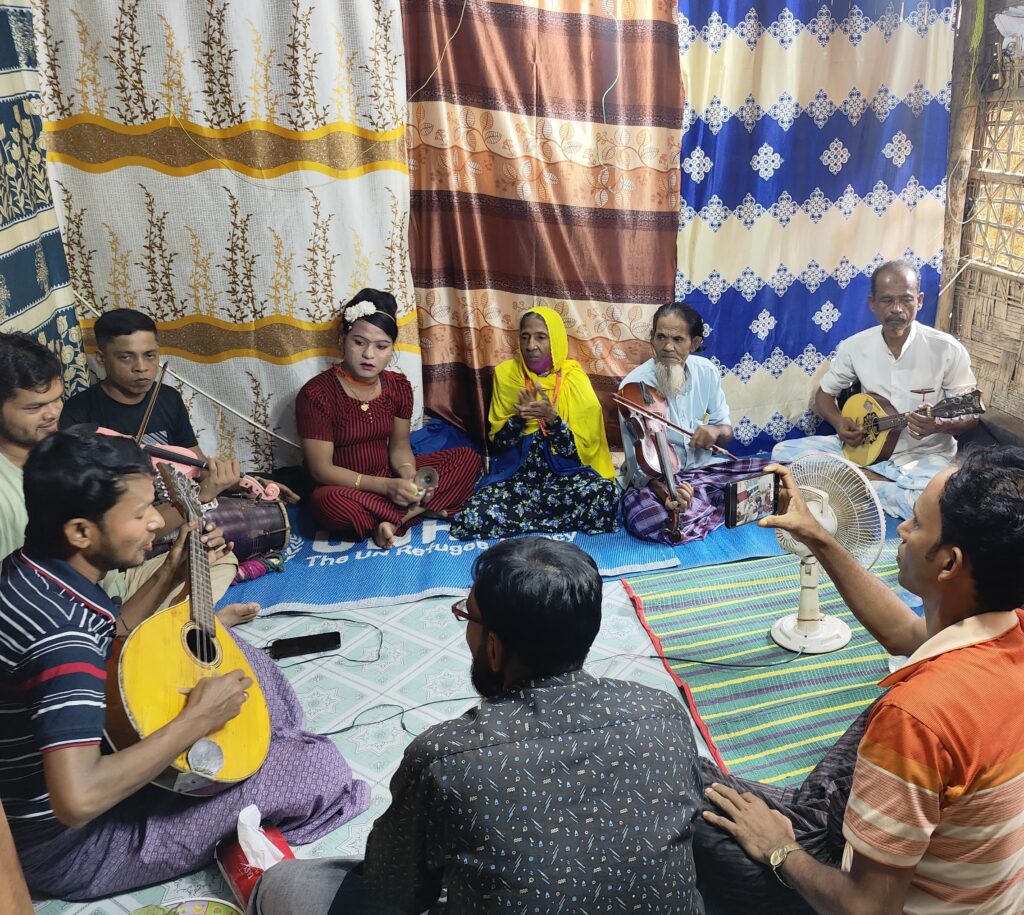
One singer leads a Rohingya ensemble in a song. Over the course of a performance, different musicians may take turns singing songs and thus leading the ensemble, giving listeners the pleasure of hearing different people’s voices.
The five main instruments in a Rohingya music ensemble are mandolin, harmonium, violin, tabla, and zuri (hand percussion). The lead instrument is usually the mandolin, though sometimes the harmonium player and occasionally the violinist may lead a song.

The person singing will also play the same melody on their instrument. Sometimes they will sing musical embellishments or a few extra words that they don’t double on their instruments. Between sung phrases, the singer keeps the music grooving by playing rhythmic and melodic patterns on their instrument. If there is more than one mandolin player, the accompanying mandolin player or players will usually play the same melody, perhaps with slightly different embellishments, or improvise a harmonious accompaniment. The accompanying musicians pay close attention to the singer to follow along.
The harmonium player may sing the song and lead the ensemble, or may accompany. An accompanying violinist will either play an embellished version of the melody with added embellishments, or will play accompanying melodic and rhythmic patterns using frequent open string double stops, like a fiddler. The tabla anchors the ensemble, keeping the beat steady and maintaining the music’s intensity and groove, while the zuri adds a percussive brightness, played as finger cymbals when the mandolin leads and as a tambourine when the harmonium takes the lead.
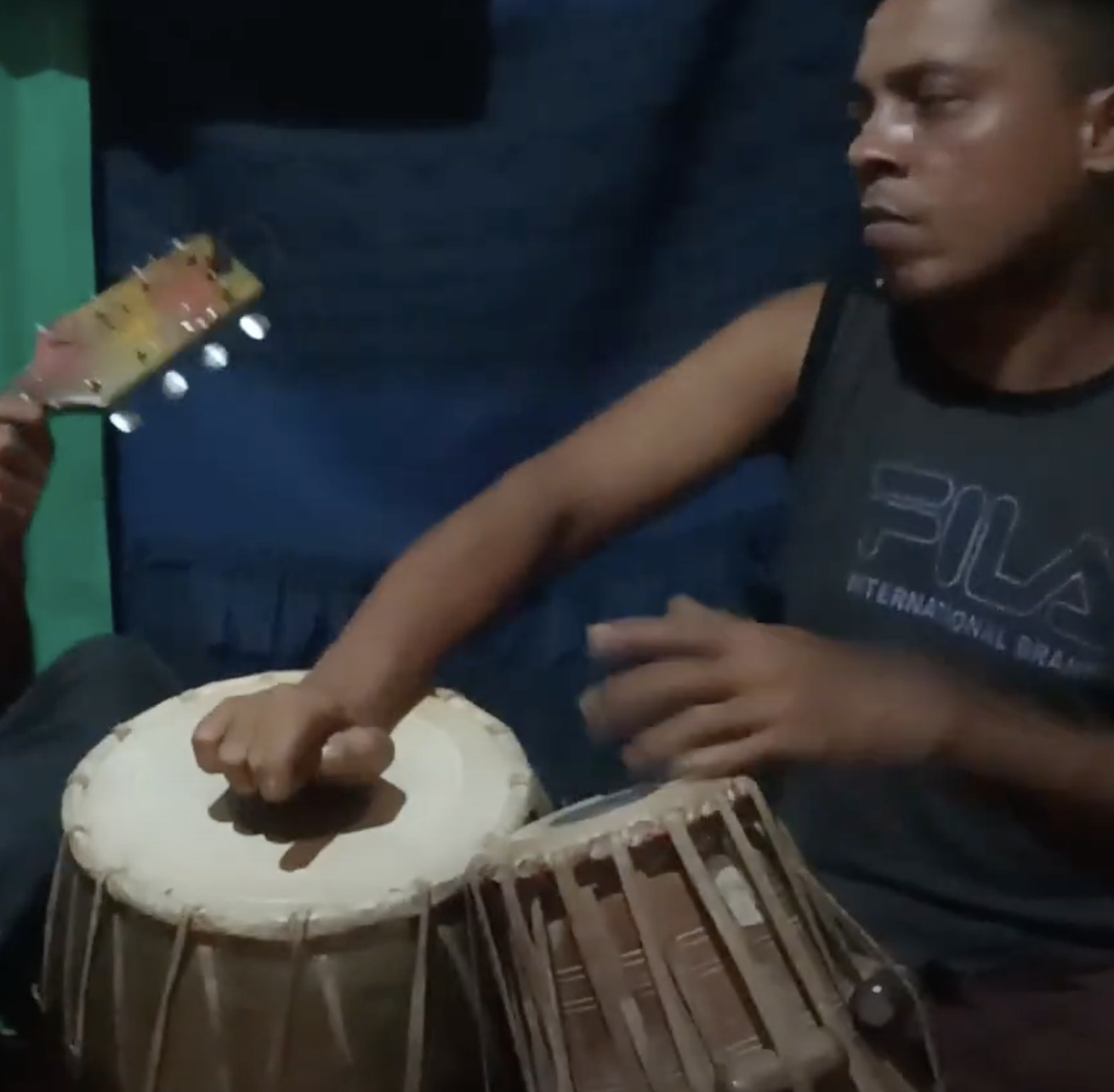
To respect their religion, the musicians sit so that they do not face in the direction of Mecca, as they would do during prayer, and also do not turn their backs towards Mecca. The mandolin player will usually sit with the harmonium player on their right side, and to their immediate left will be the violinist, with the tabla player to the left of the violinist and the zuri player to the left of the tabla. However, Rohingya musicians may adjust the arrangement depending on everyone’s preferences, and like to ask each other to make sure everyone’s comfortable where they are sitting.
Additional Rohingya instruments that are sometimes used include the drums, flutes, and harmonica (mouth organ). The harmonica is typically used by a women’s ensemble.
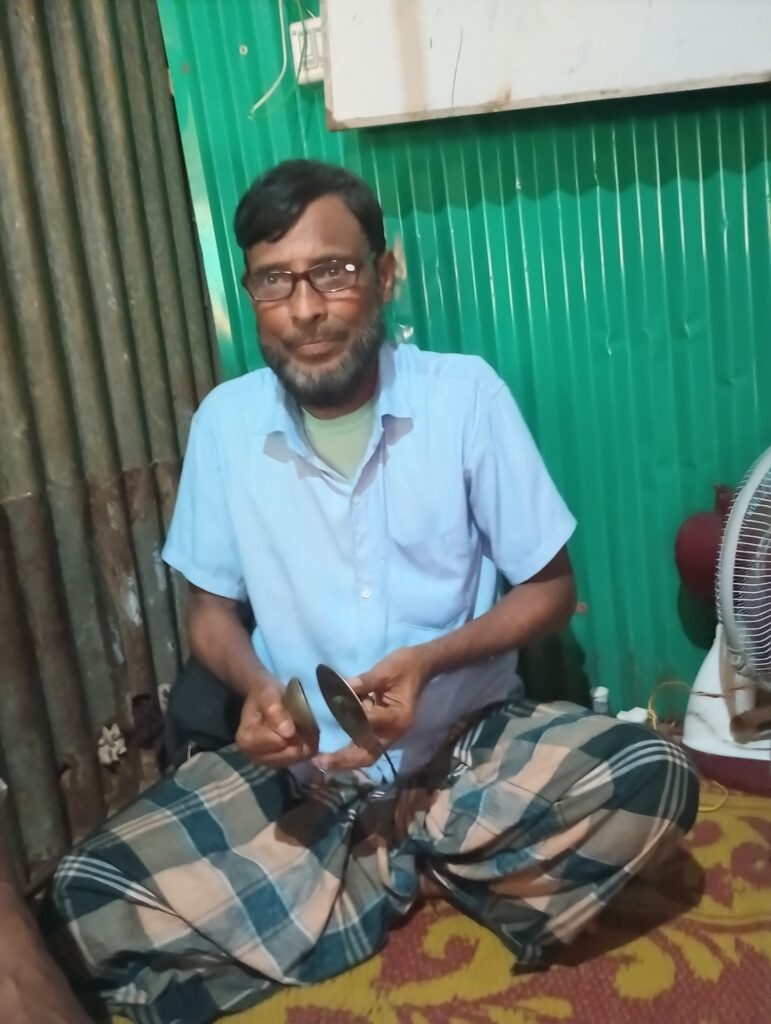
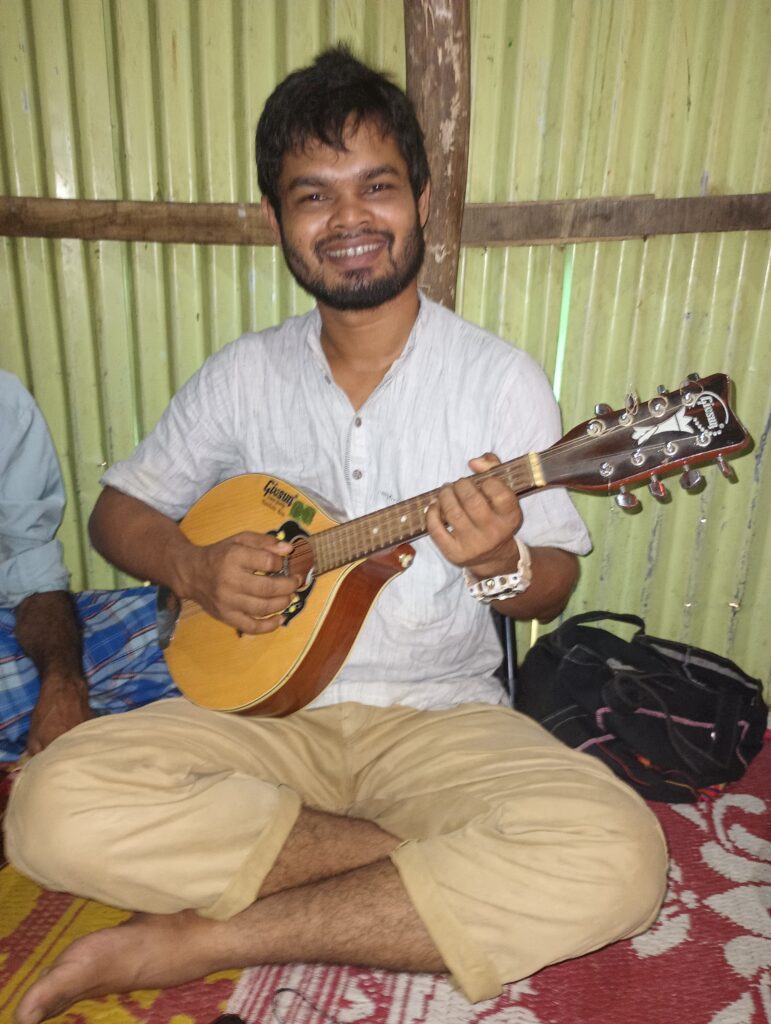
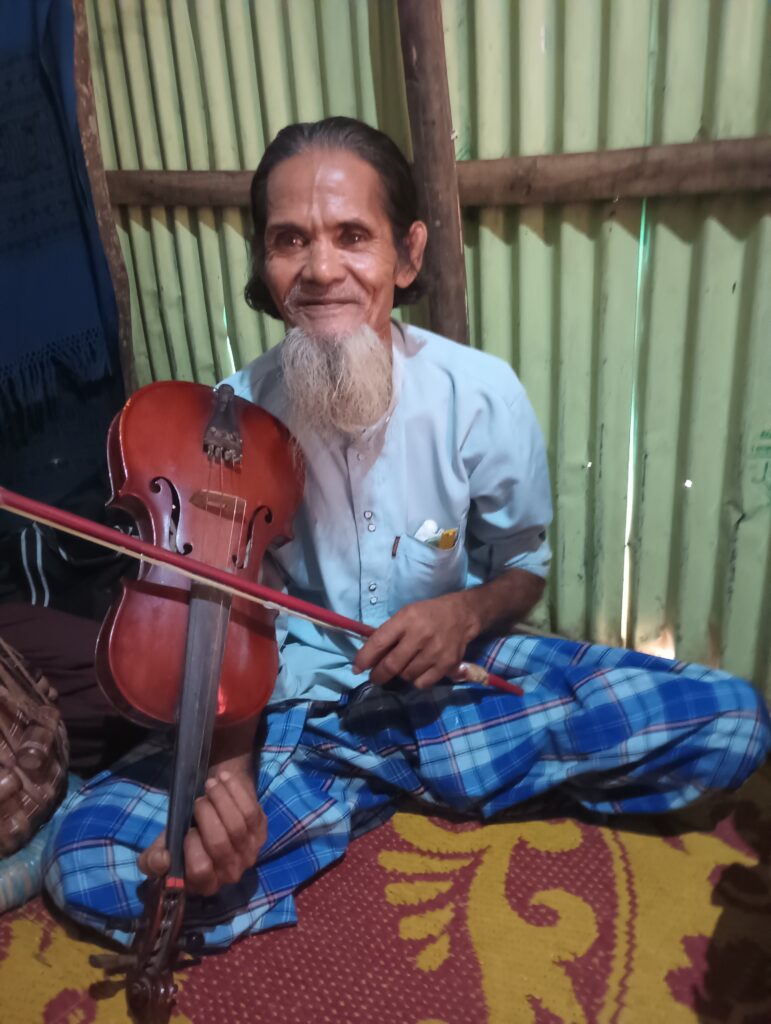
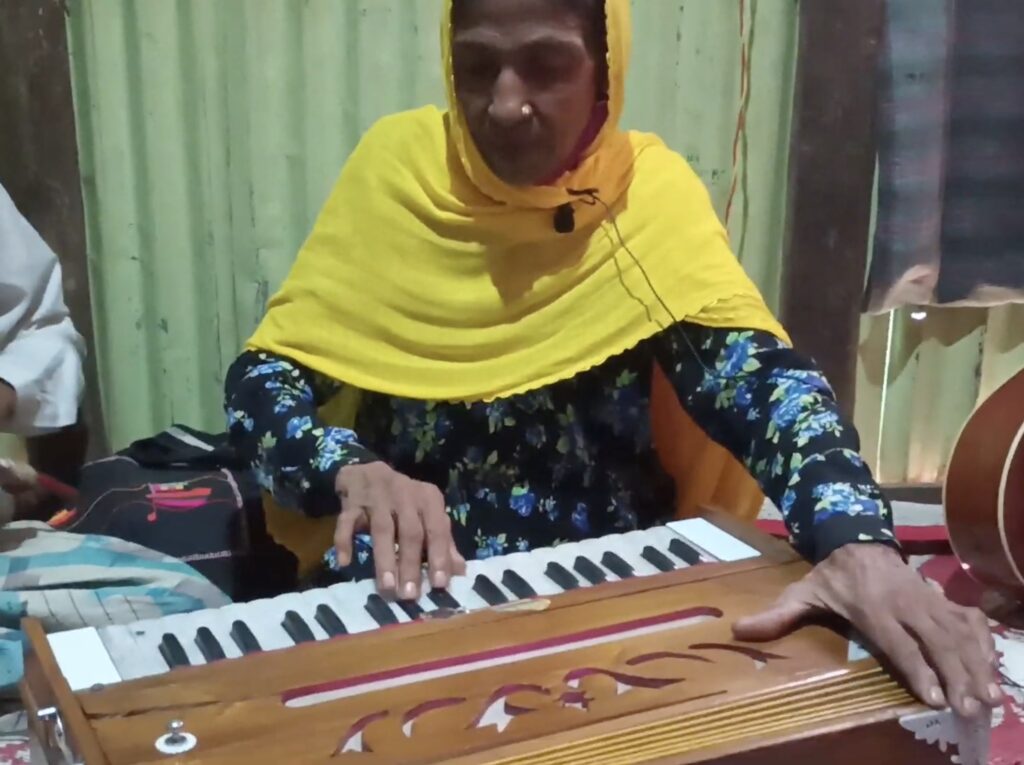
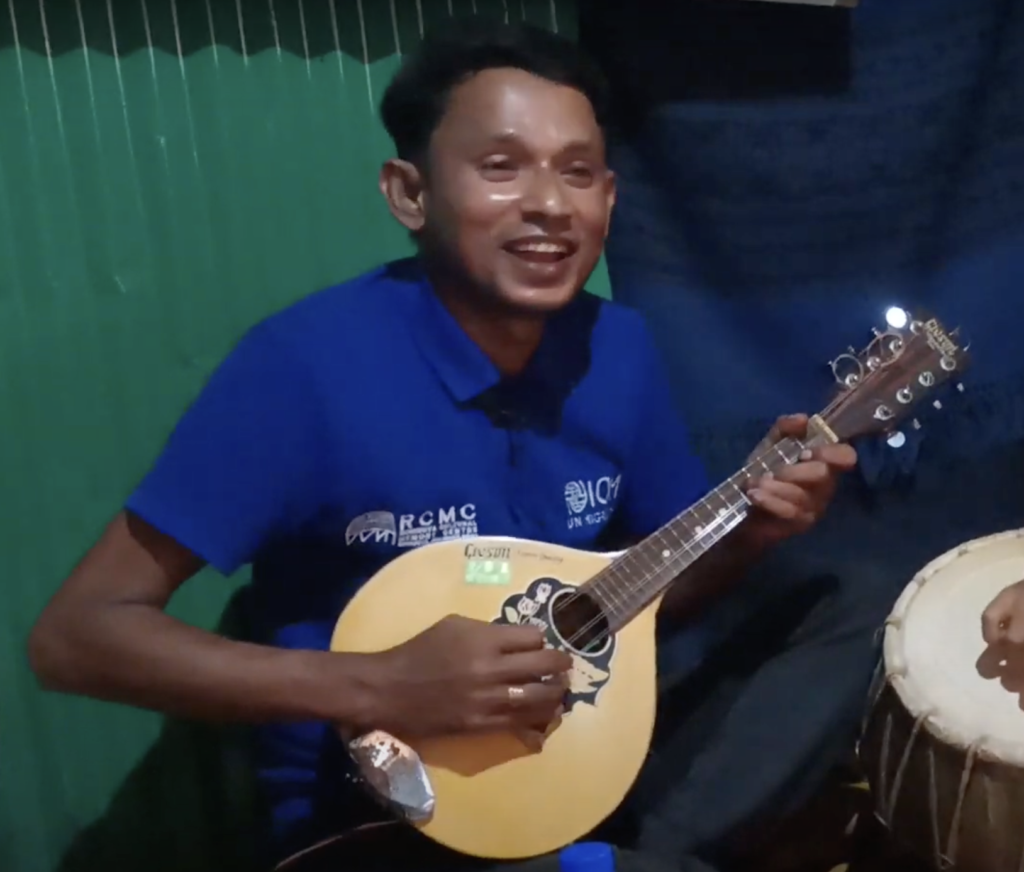
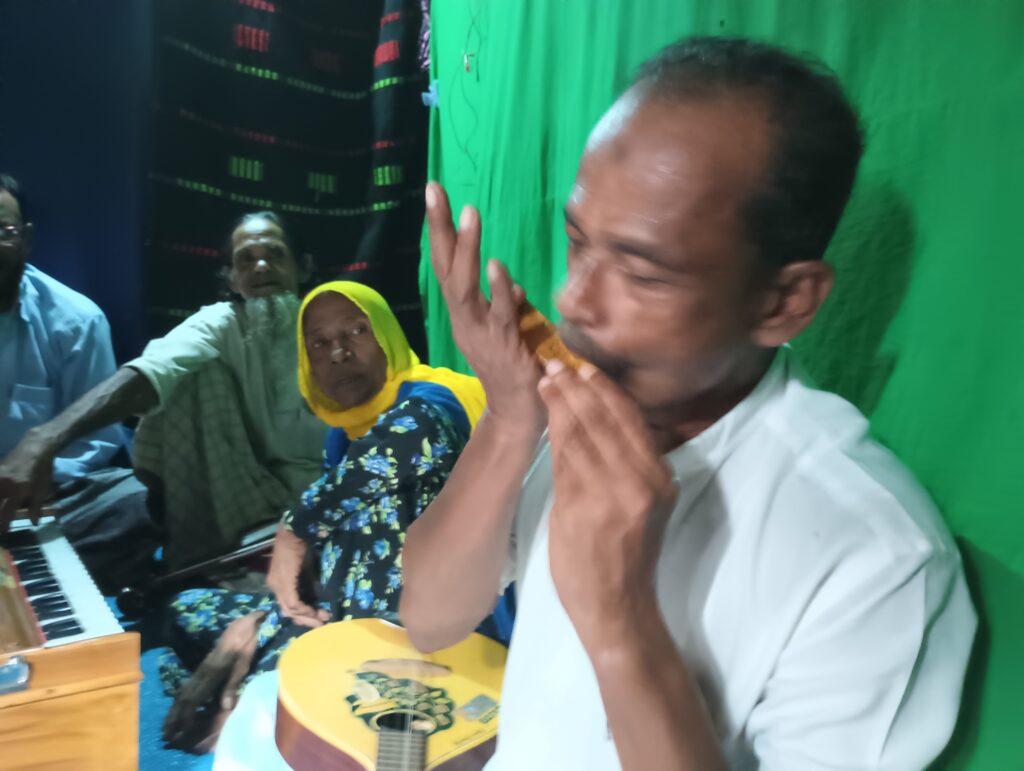
Rohingya Rythmic Patterns
There are the two main rhythmic patterns in Rohingya music: the jumurtal (“five strike”) rhythm and the caharba (“ruling strike”) rhythm.
Here, Arif beautifully demonstrates both patterns and some variations of each pattern at different speeds.
Demo two has more varied patterns than demo one…
And demo three shows slower, more varied patterns…
Here is the Jumurtal (“five strike”) rhythm, demonstrated at different speeds.
Types of Rohingya Music
Some types of Rohingya music are:
- Kawali: Historically used for debates about Islamic knowledge, kawali music is also used for graduations and weddings – sometimes including music to accompany a Rohingya bride as she travels through town to her new home with her husband’s family. Kawali music uses the tabla drums and zuri (finger percussion) and does not use the mandolin or violin.
- Love songs
- Tarana: songs that document, lament, and share about the persecution of the Rohingya
- Folk songs
- Music for awareness about important social or health issues
However, many Rohingya musicians don’t worry about labels—a song is a song! No need to overthink categorization!
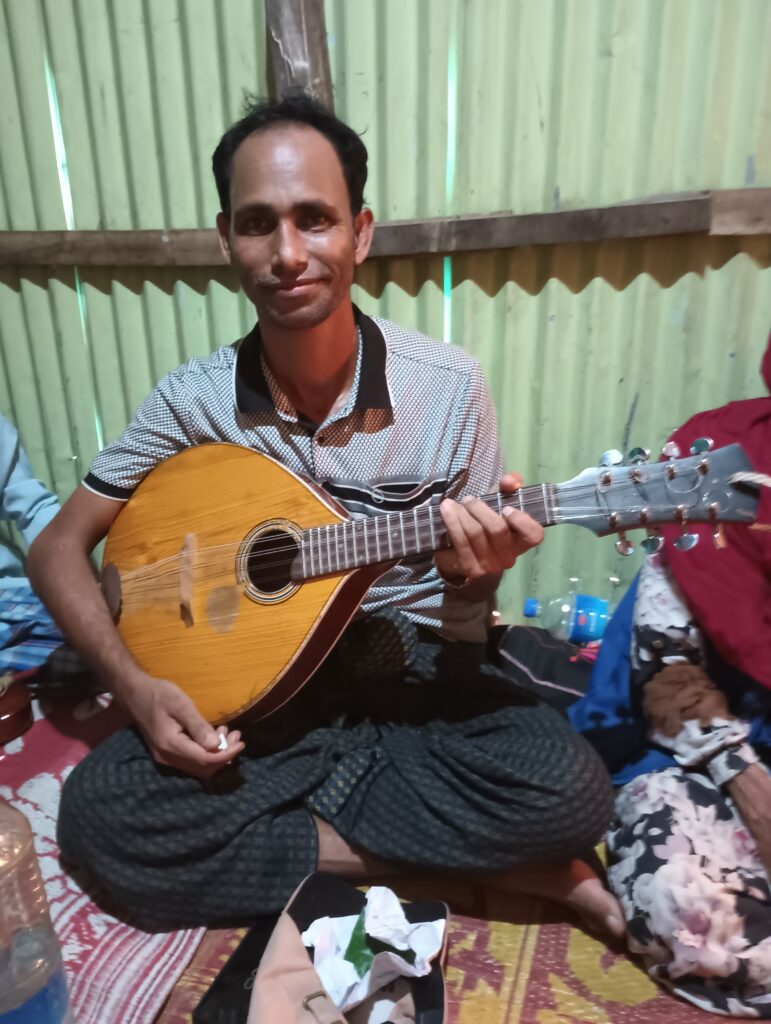
Sharing the Music
Gathered in a musician’s home in Kutupalong Refugee Camp, Rohingya musicians invite Crossing Borders Music co-director Tom Clowes to join in on the violin.
While Rohingya people have been harshly excluded because of their identity, they themselves welcome people of any background to learn and join in their music tradition.
The violin is often a lead instrument in Western ensembles, but in Rohingya music it usually plays an accompanying role, with the voice and mandolin or harmonium taking the lead.
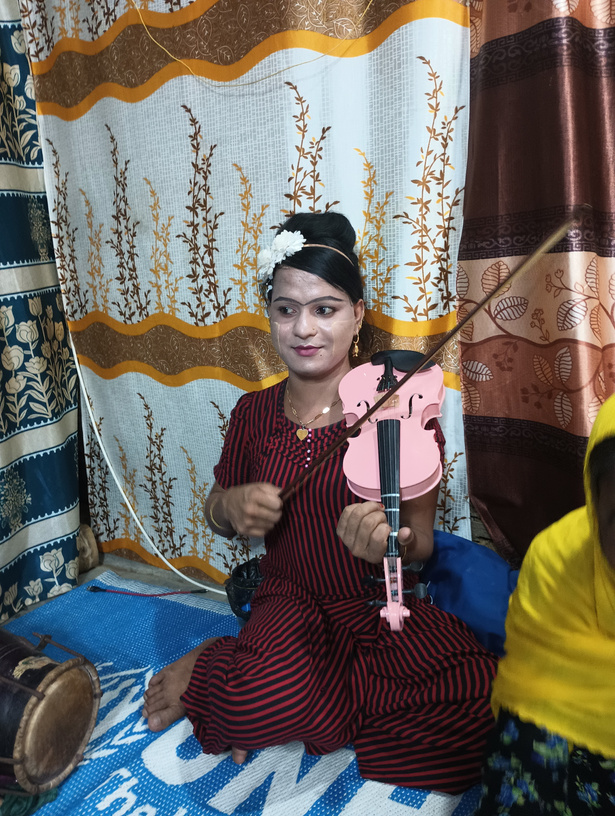
Osman here teaches Crossing Borders Music co-director Tom Clowes the notes to the Rohingya classic “O Sham Rangum Naw Zayore.”
Osman explains that there are different teaching styles among Rohingya musicians: some use a more traditional approach where, after learning the basics of playing an instrument, students memorize the songs their teachers share with them.
Osman uses a more academic approach that incorporates written materials like lyrics sheets. He also teaches his students the names of each musical pitch and has them learn scales and modes. Both approaches have been used very successfully in the community, and there is overlap between them.
The Role of Music
Music played a large role in most Rohingya weddings in Myanmar (Burma). The musicians would play and sing musical greetings, perform educational songs, perhaps perform with dancers, and then perform a farewell song.
Here Tahir sings an example of a farewell song. The lyrics, which might be sung as late as 4am or 5am, say, “It’s time to go now. It’s nearly time for our morning prayers. Forgive us for any mistakes we made in the words we sang. Stay safe. Do well for humankind.”
